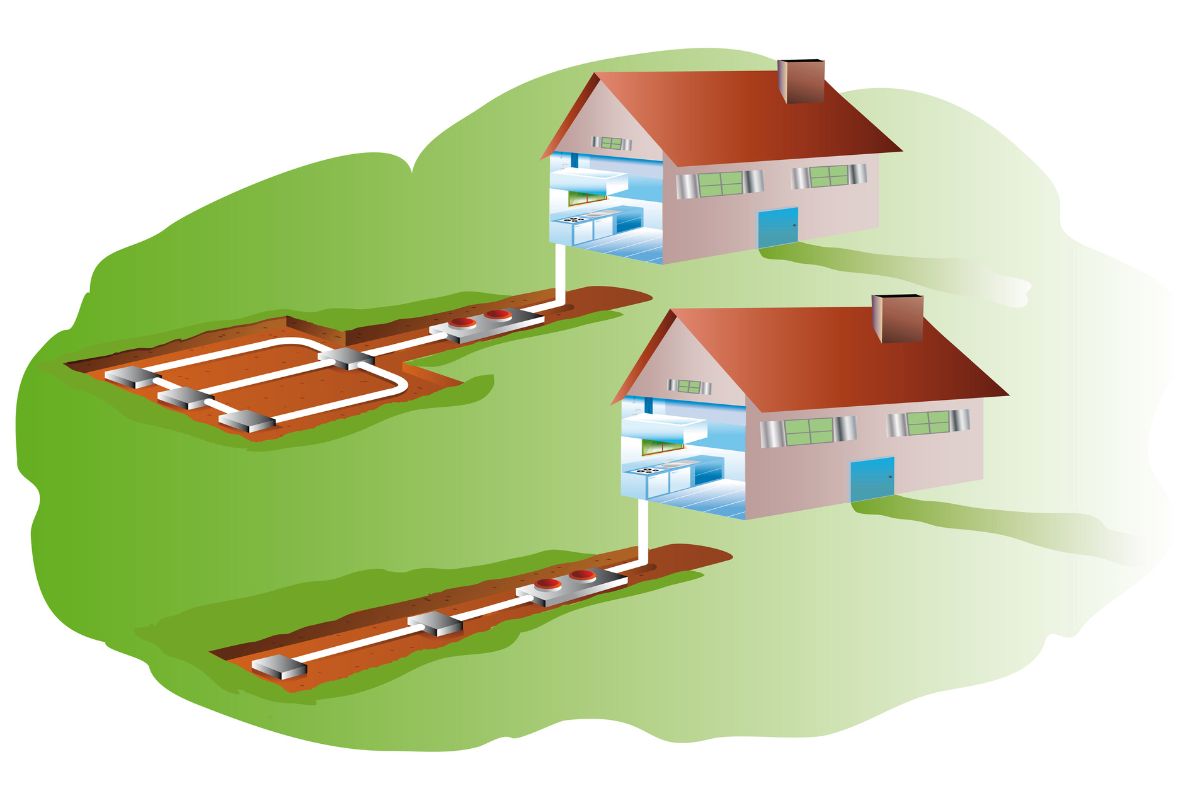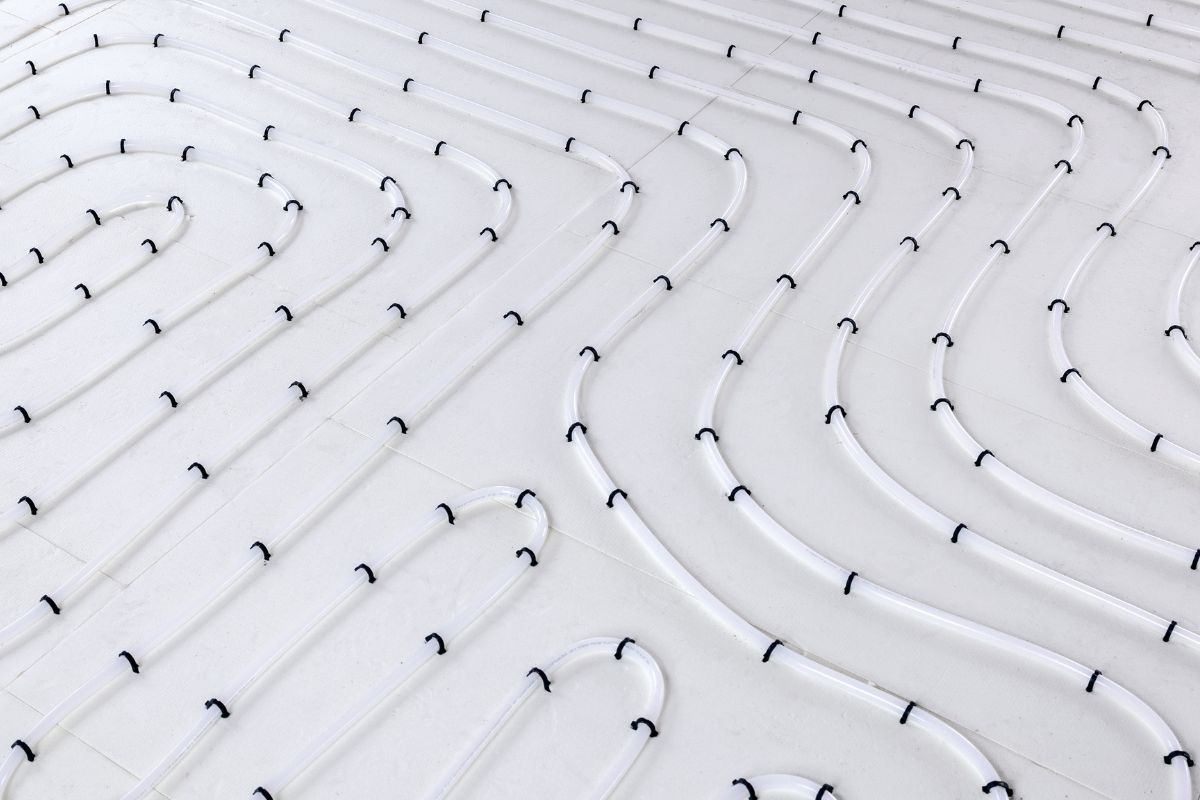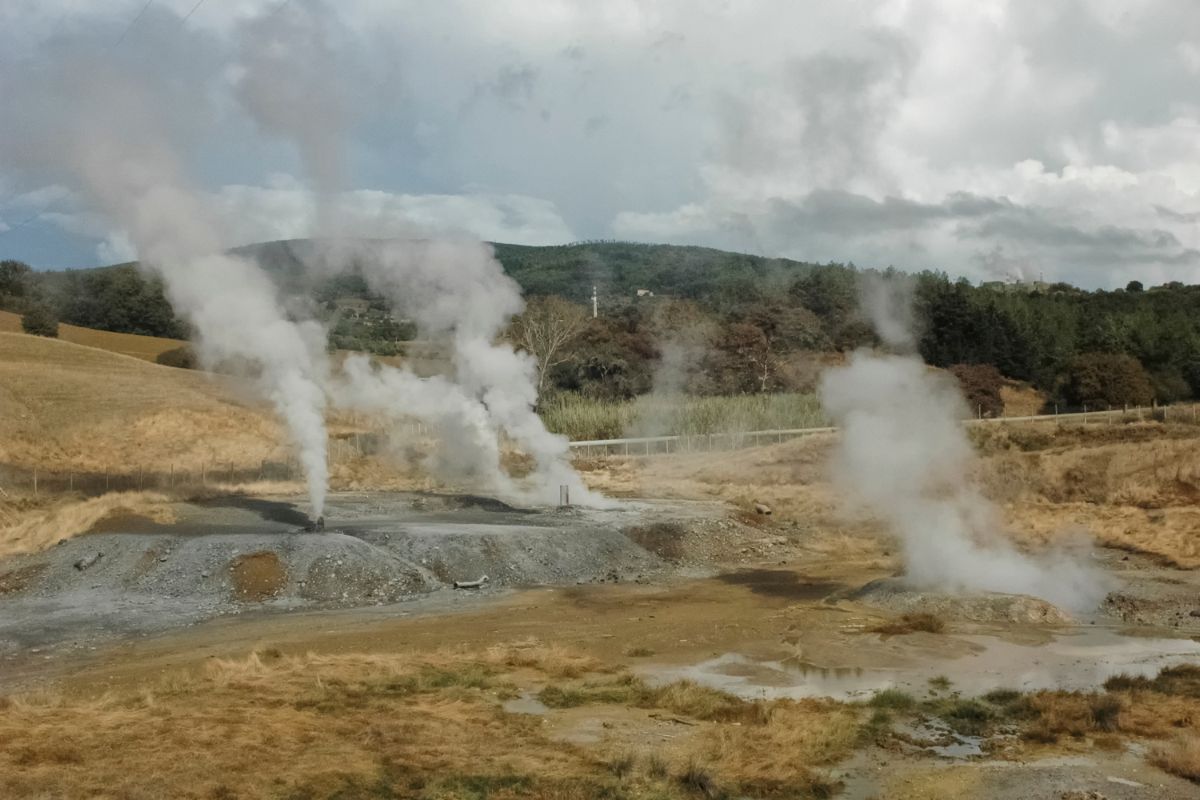When we think of geothermal energy, we tend to think of large power plants established near tectonically active landscapes, but you don’t need a drill the size of Lady Liberty to access the products of subterranean geothermal power! In fact, you don’t even need to live near significant tectonic activity.

With a certain type of HVAC system, we can utilize geothermal energy to keep our homes cool in summer and warm in winter, and it won’t cost anywhere near as much as traditional climate control systems to run!
Sounds pretty good, right? Let’s dig a little deeper and establish how residential geothermal cooling and heating actually works.
Geothermal Heating & Cooling: How Does It Work?
As little as 10 feet below the surface of the Earth, there is a consistently stable 55 degrees Fahrenheit temperature band spanning the entire globe.
It matters not if the summer sun is hot enough to melt asphalt or if the winter snows have buried the landscape in 5 feet of icy whiteness — 10 feet down, it’s only ever going to be 55 °F.
Have you ever been in a basement on a scorcher or during a cold spell?
If so, you may well have noticed that the basement seems thermally opposed to the weather outside and the temperature in the rest of the property. This is simply because basements are closer to this stable 55 °F temperature band beneath the Earth’s surface.
This is the thermal energy that geothermal heating/cooling systems weaponize to keep the localized climate of our homes livable.
Will A Residential Geothermal System Produce Electricity?
Although geothermal power plants are capable of producing a significant amount of electricity using liquids and steam drawn from geothermal wells, residential geothermal systems are climate control instruments exclusively.
Unfortunately, they’re not capable of truly harvesting electricity as solar panels or wind turbines are, but that’s not to say they can’t dramatically offset your energy bill.
Types Of Residential Geothermal Systems
Before you jump on the geothermal bandwagon and start saving, let’s discuss the different types of residential geothermal cooling/heating systems available.
They all do very much the same job, which is to send water into the 55 °F temperature band underground and then return it once warmed where a heat pump is waiting to use the thermal energy to heat or cool the house.
- Open Loop — The term “open loop” means the system is linked to larger infrastructural networks. In other words, the geothermal liquid that travels through the pipes is sourced elsewhere and then released elsewhere, which is why this type of geothermal climate control is sometimes known as “pump & dump”.
- Pond Loop — This type of geothermal system utilizes the water of a pond or lake to draw geothermal energy to a heat pump. These are usually closed systems.
- Slinky Coil Ground Loop — Slinky coil ground loops are installed overlapping one another to optimize heat transfer, meaning they can be installed in a smaller trench, although you will need more coils altogether.
- Closed Loop — Closed loop systems are the most efficient of all. They’re a completely discrete geothermal network, meaning all the piping and geothermal liquid is localized to your house.
Whichever looping method suits you and your property best, the general outcome will be the same.
The geothermal liquid will be cooling in summer and warming in winter, but again, the subterranean temperature never shifts from that 55 °F plateaux. All that changes is the temperature above ground as the seasons roll by.
How Will A Geothermal Heating & Cooling System Reduce My Energy Bills?
As we know all too well, the prices of traditional climate control fuels, such as electricity, natural gas, and oil fluctuate wildly, leading to some pretty lean months, especially in the heat of summer and the frosts of winter, but geothermal systems are unaffected by the market.
Granted, they do use electricity to run, but it’s an infinitesimal amount compared to full electric heaters, meaning the bill shouldn’t change in any meaningful way month to month.
And being that you’re using free geothermal energy, that tiny electricity burden will be your only thermal energy expense.
Are There Any Other Benefits To Residential Geothermal Systems?
As a natural resource, geothermal energy is completely green, so if you fancy yourself something of an eco-warrior and want to do your part to keep our shared home healthy, installing a geothermal loop system is a smart move!
What’s more, with no risk of carbon monoxide leakages or explosions of any kind, geothermal climate control is far safer than traditional alternatives.
Are There Any Drawbacks To Residential Geothermal Systems?
The only drawback of a residential geothermal cooling/heating system is the up-front cost of materials and installation. Historically, you’d be looking at forking out something to the tune of $50,000, but thanks to some intelligent innovation, this is no longer the case.
A geothermal installation will still be a sizable investment, but these days, it’s a much more realistic proposition for homeowners across the nation. Even so, considering the start-up fees, you’re likely wondering if going geothermal is really worth it.
Is A Residential Geothermal System Worth The Expense?
While you’re not going to make your money back immediately, considering a residential geothermal energy solution can cut your monthly heating and cooling bills in half, you’re guaranteed to see an ROI eventually. Besides, your personal savings are just one fantastic aspect of geothermal energy.
Heating and cooling accounts for roughly 11% of our entire nation’s carbon emissions, but geothermal systems are completely emission-free.
What does this mean in the war against pollution? Well, every year that a geothermal system is operational is the equivalent of removing two vehicles from the roads permanently. Consider the impact this would have on a nationwide scale!
Final Thoughts
Geothermal energy is one of the most criminally neglected forms of renewable power. Not only can it save you a small fortune on your energy bills, it’s guaranteed to help pull us from the brink of environmental catastrophe.
The up-front costs of setting up a geothermal system can be steep, so it’s a significant investment, but unlike other investments, an ROI is a sure thing on a long enough time scale!


